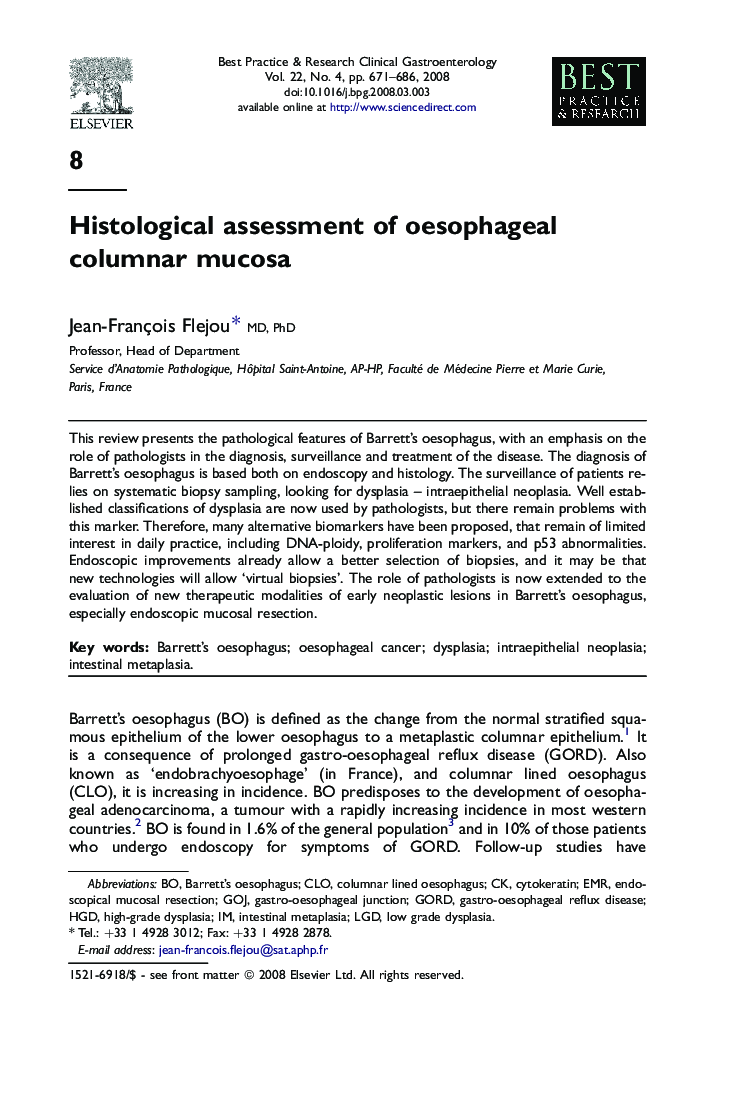| Article ID | Journal | Published Year | Pages | File Type |
|---|---|---|---|---|
| 3254680 | Best Practice & Research Clinical Gastroenterology | 2008 | 16 Pages |
This review presents the pathological features of Barrett's oesophagus, with an emphasis on the role of pathologists in the diagnosis, surveillance and treatment of the disease. The diagnosis of Barrett's oesophagus is based both on endoscopy and histology. The surveillance of patients relies on systematic biopsy sampling, looking for dysplasia – intraepithelial neoplasia. Well established classifications of dysplasia are now used by pathologists, but there remain problems with this marker. Therefore, many alternative biomarkers have been proposed, that remain of limited interest in daily practice, including DNA-ploidy, proliferation markers, and p53 abnormalities. Endoscopic improvements already allow a better selection of biopsies, and it may be that new technologies will allow ‘virtual biopsies’. The role of pathologists is now extended to the evaluation of new therapeutic modalities of early neoplastic lesions in Barrett's oesophagus, especially endoscopic mucosal resection.
